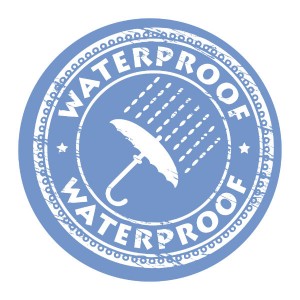If you perform no other chimney maintenance, we recommend waterproofing your chimney. This is true even if you have a chimney or fireplace that you never use, as damage to your chimney can quickly turn into damage to your whole home—showing up as streaks, mold, and mildew on your ceilings, floors, walls, and furniture. For this reason, water is widely understood to be the chimney’s worst enemy. As such, preventing its entry into your chimney should be one of a homeowner’s top priorities.

A leaky chimney can bring all sorts of problems – damages to your property and health issues. Waterproofing your chimney is the way to go.
The chimney has a reputation for being impenetrable, built as it is of sturdy brick and mortar. Unfortunately, both brick and mortar are actually quite porous, and because the chimney extrudes above the house it is in the direct line of fire of Mother Nature. Rain, snow, wind, and ice all work against your chimney to weaken it.
We recommend that you contact a professional at the first sign of chimney-related water damage, as it will only grow worse with time. Furthermore, if you have no idea if your chimney has ever been waterproofed or if you’ve recently moved into a home with a fireplace, a professional chimney inspection is a very wise preventative measure to take. If you live in the Fairview, North Carolina, area, one of the C.S.I.A. certified sweeps at Environmental Chimney Sweep will be able to asses any existing damage to your chimney, repair it, and shore your chimney up against future chimney leaks.
Damage Caused by Leaking Chimneys
A leaky chimney can manifest itself in a number of ways both inside and outside your chimney. According to the Chimney Safety Institute of America, the most common types of water damage in and around the chimney include:
- Cracked or deteriorated chimney liners
- Rusted dampers
- Efflorescence (white streaks), mildew, or rust on the chimney’s exterior
- Decayed mortar
- Water-stained walls and ceiling
- Rotting adjacent wood or ruined wall coverings
- A tilted, settled, or collapsed chimney
If you’ve noticed any of the above problems with your own chimney, please contact Environmental Chimney today.
How Environmental Chimney Can Waterproof Your Chimney
Depending on where water is entering your chimney, we will be able to repair your leaking chimney and prevent it from future leaks with one or more of the following waterproofing methods:
- Installation of a Chimney Cap or Top-Sealing Damper: A chimney without a top-sealing damper or a cap is like a house with a roof. In other words, it’s a disaster waiting to happen. One of our technicians can help you determine which component will make the most sense for you and your chimney. Caps and dampers have an added benefit of keeping debris, animals, and insects out of your chimney and sparks inside. Read all about our chimney caps and top-sealing dampers here. Tuckpointing/Repointing: Tuckingpointing or repointing is the process of removing old, crumbling mortar on the exterior of your chimney and replacing the soft, spalled mortar with new mortar to create as watertight a seal as possible.
- Application of a Waterproofing Sealant: We proudly use ChimneySaver products to waterproof our customers’ chimneys because we know that it’s very important to have a product that is 100% vapor permeable so that smoke and fumes can escape through the brick without allowing water to pass through. ChimneySaver products have been tested to ASTM Standards and have been found to reduce water penetration by 96.9% while remaining 100% breathable.
A professional waterproofing by those of us at Environmental Chimney will not only ensure that your home is protected from often-profound water damage but will also contribute greatly to the life of your chimney. For more information on waterproofing or to schedule an inspection with us today, reach us at 828-243-0098.
